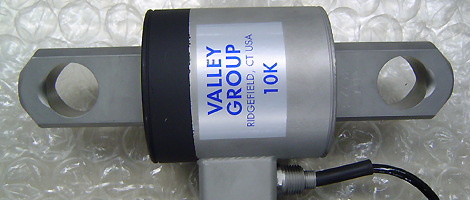CAT-1 Transmission Line Monitoring System and RateKit Thermal Rating Toolkit

-
- CAT-1
- : Transmission Line Monitoring System and RateKit Thermal Rating Toolkit

The first CAT-1 Transmission Line Monitoring System was installed by Virginia Power in 1991. Since then, over 300 Transmission Line Monitoring Systems have been installed over 100 utilities in more than 20 countries on 5 continents.
Over two thirds of the 30 largest utilities in North America have CAT-1 systems, and over half of those utilities operate CAT-1 systems in real-time to provide accurate real-time ratings to utilities' EMS/SCADA.
The CAT-1 Transmission Line Monitoring System allows accurate real-time rating of transmission lines, by monitoring the mechanical tension of both ruling span sections at a deadend structure. Sags, clearances, and average conductor temperature are all directly related to CAT-1 measurements. With line ampere data from your EMS/SCADA system, an actual line rating is calculated.
Sales Brochure
To learn more about the benefits and features of CAT-1, start with our 6-page color brochure : CAT-1 Brochure

Real-Time Rating Application
CAT-1 Series 3.1 (Real-Time)
Each CAT-1 main unit monitors the performance of two line sections terminating at a deadend structure. The CAT-1 main unit is a NEMA-enclosed, solar powered, data acquisition and processing unit, complete with a two tension monitoring load cells, a Net Radiation Sensor, an ambient temperature sensor, and CAT-1W Clearance Warning firmware, connected by an umbilical to the CAT-PAC.
CATMaster Base Station
The CATMaster acquires data from up to four CAT-1/CAT-PAC units via a spread spectrum radio transceiver. The data is then translated into the utility's EMS protocol, and is communicated directly to the EMS master.
CATMaster Base Station Data Sheet
IntelliCAT for Windows (ICW)
IntelliCAT for Windows (ICW) is a turnkey solution to support operational use of real time thermal capacity ratings for transmission lines. Rapidly deploy fully operational thermal rating systems for multiple transmission lines with minimal demand on EMS/SCADA programming resources.
IntelliCAT for Windows Real Time Rating Software
Load cells
Two stainless steel tension monitoring load cells are connected to each CAT-1 main unit, each monitoring one suspension section in each direction from a deadend. The Valley Group's patented load cells are the only available load cells for use in a transmission line environment.
Net Radiation Sensor (NRS)
Net Radiation Temperature (NRT) is measured by the NRS, which provides an ingeniously simple method of combining ambient temperature with wind and solar effects (and emissivity and conductor time constant) to greatly simplify measurements and rating calculations.
A second NRS can be added to increase rating accuracy at structures where a large line angle occurs, allowing measurement of the different NRT on each line section.
Data Logging Application
CAT-1 Series 3.1 (Cellular)
Each CAT-1 main unit monitors the performance of two line sections terminating at a deadend structure. The CAT-1 main unit is a NEMA-enclosed, solar powered, data acquisition and processing unit, complete with a two tension monitoring load cells, a Net Radiation Sensor, an ambient temperature sensor, and CAT-1W Clearance Warning firmware. Data downloads by commercial cellular telephone.
Load cells
Two stainless steel tension monitoring load cells are connected to each CAT-1 main unit, each monitoring one suspension section in each direction from a deadend. The Valley Group's patented load cells are the only available load cells for use in a transmission line environment.
Net Radiation Sensor (NRS)
Net Radiation Temperature (NRT) is measured by the NRS, which provides an ingeniously simple method of combining ambient temperature with wind and solar effects (and emissivity and conductor time constant) to greatly simplify measurements and rating calculations.
A second NRS can be added to increase rating accuracy at structures where a large line angle occurs, allowing measurement of the different NRT on each line section.
Documentation
- Model CAT-1 User Manual
- Download PDF(4KB)*
- Model CAT-1 Data Sheet
- Download PDF(219KB)*


